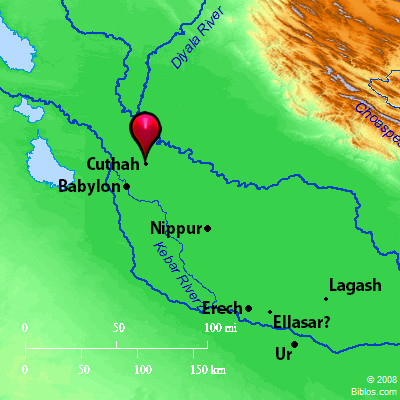Atlas  Cuth (Cuthah) and surrounding area Maps Created using Biblemapper 3.0 Additional data from OpenBible.info Occurrences 2 Kings 17:30 The men of Babylon made Succoth Benoth, and the men of Cuth made Nergal, and the men of Hamath made Ashima,Encyclopedia CUTH; CUTHAHkuth, ku'-tha (kuth, kuthah; Choua, Chountha): The longer writing is the better of the two, and gives the Hebrew form of the name of one of the cities from which Sargon of Assyria brought colonists to fill the places of the Israelites which he deported from Samaria in 772 B.C. (2 Kings 17:24, 30). Probably in consequence of their predominating numbers, the inhabitants of Samaria in general were then called kuthiyim, or Cutbeans. 1. The Ruins of Cuthah: CUTH, or Cuthah, found only in 2 Kings 17:24, 30. Rassam has discovered (1879) bricks in a ruin 15 ms. n. e. of the ruins of Babylon with the name of Cuth inscribed upon them and this place is, therefore, supposed to be the site. Strong's Hebrew H3575: Kuth or Kuthaha city of Assyr. |



